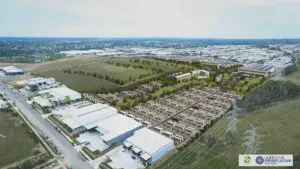Southern California Edison – the primary electricity supplier for much of Southern California – has signed seven contracts for 770MW worth of battery-based energy storage intended to replace ageing natural gas plants set to retire as soon as possible.
As one of the largest procurements of its kind, Southern California Edison (SCE) is looking to switch the seven battery storage projects on by August 2021 – a mammoth hill to climb for projects of this size, requiring the developers to line up financing, order batteries and other equipment, complete construction, and begin providing capacity to the grid in just over a year.
The seven battery storage projects – which still must be approved by the California Public Utilities Commission (CPUC) – are intended to help meet a November 2019 CPUC call for 3.3GW of carbon-free resources to help meet California’s grid reliability needs in the face of a potential shortfall.
Half of the 3.3GW solicitation is due online by August 2021 and SCE are responsible for delivering the largest share among California’s utilities and community-choice aggregators (CCAs).
SCE’s solicitation for projects and the resulting seven contracts signed this month represent one of the United States’ largest energy storage procurements and will assist the integration of intermittent electricity generation from renewable sources such as wind and solar.
The projects will also fill a gap set to be left by four natural gas-fired power plants on the Southern California coast that use seawater for cooling but which have been ordered to close as soon as possible.
“These new emissions-free projects will help us ensure the reliability of the grid for our customers and integrate an ever-increasing amount of clean renewable energy over the next decade,” said William Walsh, SCE vice president of Energy Procurement & Management.
“Signing these contracts aligns with SCE’s Pathway 2045, continues our support of California’s goal to green the state and also encourages clean energy projects of all types, creating jobs and strengthening our economy.”
The largest battery storage project contracted measures in at 230MW/920MWh, while the smallest is 50MW, with the others falling somewhere in between. Most of the projects will be co-located with adjacent solar power plants to charge the batteries using renewable electricity and will be located at the same point of interconnection and, according to SCE, are “the first of their kind on California’s grid.”
The 770MW procurement “tops the entire 2019 U.S. storage market by more than 200 megawatts” according to Daniel Finn-Foley, head of energy storage for Wood Mackenzie Power & Renewables. “The storage market is approaching a deployment acceleration over the next two years that will be unprecedented in recent U.S. electricity history,” Finn-Foley said.
Floridian wholesale electricity supplier NextEra Energy Resources will build the three largest projects – with two measuring in at 115MW/460MWh and the third, the largest 230MW/920MWh project, which will be connected to NextEra’s 250MW McCoy solar farm. The McCoy storage project will be one of NextEra’s largest such projects, just behind the 250MW/1GWh project being developed at its 250MW Sonoran Energy Center in Arizona.
Only one of the contracted projects – the 100MW/400MWh Gateway 1-2 battery system in San Diego County to be developed by LS Power – will not be connected with an existing solar project.
The news came on the same day as Virginia-headquartered Dominion Energy announced a major shift towards renewable energy generation.
The company announced on May 1 plans to quadruple the amount of wind and solar generation in its 15-year Integrated Resource Plan (IRP), which now expects to install and be running nearly 24GW worth of renewable capacity by 2035.
Included in Dominion Energy’s plans is 5.1GW of offshore wind – including the 2.6GW Coastal Virginia Offshore Wind project, already announced by the company, and set to be up and running by 2026. By 2035, Dominion also plans to host 15.9GW of solar and another 2.7GW of energy storage.
Accompanying the company’s announced increase of its IRP was a solicitation for up to 1GW of solar and onshore wind generation, and up to 250MW of energy storage – the largest solicitation in the company’s history for renewable energy in a calendar year.
“We’re focused on the health and safety of our employees and customers during this coronavirus pandemic and see these projects as a catalyst to restarting the economy when appropriate,” said Robert M. Blue, president, Dominion Energy Virginia. “We are putting Virginians to work on renewable energy projects that will create thousands of jobs, transforming the environment and the economy of the Commonwealth.”










